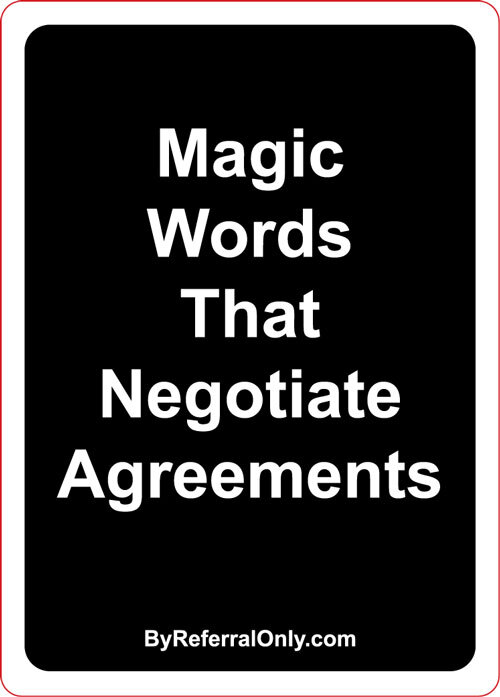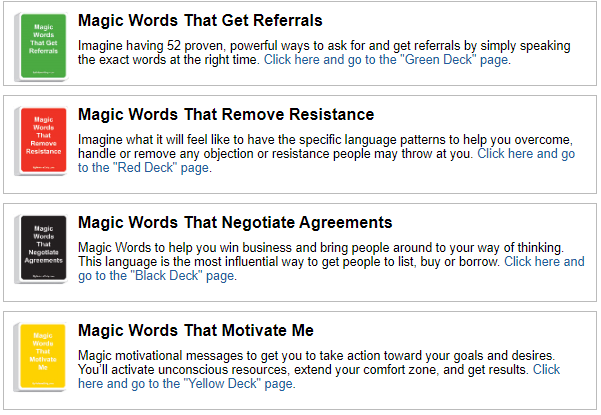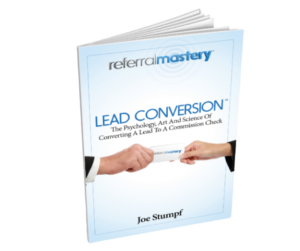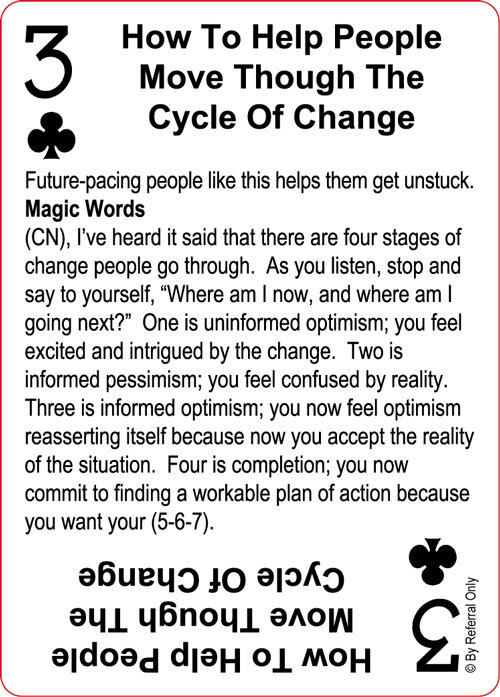When I look at the world we are living in right now, I realize just how much, and how fast, it’s changing. Every day there seems to be a new obstacle, new mandate, new procedure that we have to meet as agents and lenders…but on the flip side, there are also new positive habits, new routines, and even newfound skills that have evolved from it.
So, change can be good and bad. It’s all about how you look at the situation.
Homebuyers and sellers go through a rollercoaster of emotions, and that change can be just as challenging and just as exciting, however, when you are able to lead, guide and protect them through the process they get to see your unique value on full display. (this is what will set you apart)
Today’s video comes from the deep depths of the By Referral Only vault (do you recognize that young man? lol) but the message couldn’t be more relevant to what we are experiencing right now. It comes from our By Referral Only Magic Words Dojo. A place where our members can go to access a database of expert trainings that helps to master the language patterns that can take abilities and businesses to that next level of success. This particular lesson is from the Magic Words That Negotiate Agreements section.
You simply MUST perfect the art of helping people navigate change and this short video will help you help your clients through these and future challenging times.

Help People Move Through The 4 Stages of Change
Future-pacing people (homeowners) helps them to get unstuck when trying to make the decision to buy or sell. You can help walk them through this with these Magic Words:
“I’ve heard it said that there are four stages of change that people go through.”
I love the softener statement, “I’ve heard it said”. I like it because you’re not saying its absolutely true. You’ve just heard that it may be true. Here you’re saying, “You listen and you tell me whether it’s true or not.” This helps them dial in, pay attention, and think.
The next statement is referred to as hijacking their voice.
“As you listen, stop and say yourself, ‘Where am I now, and where am I going next?'”
That embedded command “stop” is very powerful because everything after stop goes right into the conscious mind. So, “stop and say to yourself… ” Now it didn’t say stop and listen, it said stop say to yourself. Now you’ve just hijacked their voice and you’re going start to pace them through this.
Stage 1: Uniformed Optimism
“One is uninformed optimism; you feel excited and intrigued by change.” You have no idea where you’re going, but you are really excited about it.
Stage 2: Informed Pessimism
“Two is it informed pessimism. You feel a little confused by reality.” This is when you start to see the details of everything.
Stage 3: Informed Optimism
Now you start to get awareness. “Three is informed optimism; you now feel optimism reasserting itself because you now accept the reality of the situation.”
Stage 4: Completion
“Four is completion; you now commit to finding a workable plan of action because you want your _____.” (enter their 5-6-7 outcome that they want to achieve)
When you finally describe each of the four steps they will experience during the change, it gives them a consequence of a very free environment, or you get to help them rehearse the steps of going through the steps of change before they reached their 5-6-7 outcome desired. (see below)
So it’s like, you’re laying out these stones for them, and you’re saying right at the end is the outcome they truly desire (their 5-6-7). We just have some steps to get there. This is a great way to help people move through change.
This is a pretty advanced dialogue. This is a dialogue that you’d find a good psychotherapist using with a person who’s had trauma in their life. And right now, when people find themselves in a short sale situation or a foreclosure situation, it’s traumatic and you can help pace them through that process by using this language that helps people move, change the conversation.
What exactly is the 5-6-7 method?
Here’s a question: Have you ever tried to help a person who didn’t trust you? Or maybe you didn’t trust them. It’s like pushing a cart full of bricks up a hill. You can do it if you want to, but it’s a struggle, and full of a lot of effort. There’s little joy, and of course, it’s very fatiguing.
Now thankfully experience shows that there’s one thing that will make your client relationship more fun, profitable, and enjoyable and that one thing is trust. What is trust? Trust is both emotional and logical. Emotional trust is when you expose your vulnerability to people and they expose their vulnerability to you. Both of you believe that neither one of you will take advantage of each other’s openness.
Up until now, I’ve not been able to find a more usable, more practical tool to build trust faster, and more efficiently than using the 5-6-7 method. I like to call it a ‘method’ because the process applies very specific rules and very specific disciplines. In a nutshell, it’s the process that will help you understand your client’s values and true desires so that you can build trust and properly lead them through the process and make good decisions. The Magic Words Dojo 5-6-7 method is a foundational concept for By Referral Only members…
Get A Behind The Scenes Look At The Magic Words Dojo

If you like the idea of having a place to go anytime you need the words, scripts or dialogues for a certain situation, then the Magic Words Dojo will feel like heaven to you. It’s part of By Referral Only membership and we’d love to let you come in and take a closer look. Just click here to schedule.

For a limited time get Joe’s book, Lead Conversion FREE with the purchase of the What’s My Home Worth Complete Marketing Toolkit! 👉 more here
(a $49 value)



